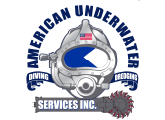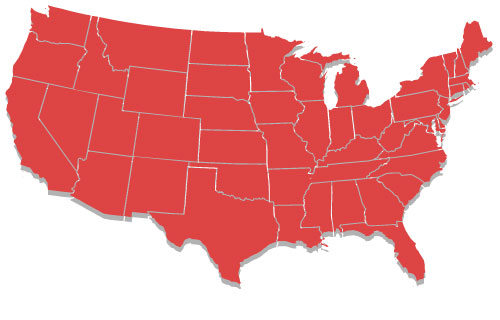If you’re in charge of managing the ponds and lakes for the HOA in your community, you may or may not have heard of something called “pond dye.”
Pond dye is nothing more than food coloring for lakes and ponds. When added in sufficient quantities to the water, it will change the color from an ugly brown to an aesthetically-pleasing blue or green. Some HOA’s will use pond dye to match the color of the water to the surrounding pond or lake environment.
There are several misconceptions about pond dyes, and it prevents many HOA’s from using them. We’re going to look at the pros and cons of pond dyes and how your HOA can benefit from them.
How Does Pond Dye Work?
No matter the manufacturer, all pond dyes work by coloring the water. The actual color can be several different shades of blue/green, depending on the product used and the chemistry of the water (how it will react).
There are two popular methods of applying the dye. The first is used on bigger lakes and bodies of water. A 50lb bag of dye crystals will be cut open, and the maintenance crew will hop into a boat on the far side of the lake.
As they motor from one side to the other, they will allow a portion of the crystals to fall out of the bag and into the water.
It could take anywhere from 1 – 10 bags depending on the size of the lake. After the maintenance crew reaches the end of the body of water, they’ll circle back a few times and rev up the motor. This helps the dye get absorbed more quickly by the water.
The second method involves standing on a dock or shore and dumping 1 gallon bottles into the water. It can take much longer this way as the dye will need to mix into the water on its own.
What Are the Benefits of Pond Dye?
Many HOA ponds and lakes are not natural – if they were they would have dried up long ago and turned into a marsh (if not fed by a river or natural aquifer such as a spring). Because they’re not natural, algae growth can spiral out of control, especially in stagnant water in the warm summer months.
Many HOA ponds have a dark green to brown tinge to the water. Many people (including prospective residents) find this color to be unattractive. The main reason pond dye is used to keep up the aesthetics of the body of water, which will keep property values high.
What many people don’t realize is that pond dyes can help inhibit certain nuisance algae from growing. Once the dye has been dissolved in the water, it starts to absorb sunlight, thereby reducing the depth of the photic zone. Submerged plant and algae growth will be contained to the shallow areas of the body of water.
It should be noted that dying your pond is not a substitute for professional pond dredging. As time goes by, leaves and other organic matter will fall into the water and sink to the lowest point – where beneficial bacteria cannot break it down. As even more time goes by, nutrient levels will grow even higher and nuisance plant/algae outbreaks even more severe.
Is Pond Dye Safe?
Provided that the ingredients of the dye are environmentally friendly and non-toxic, it is safe for humans, animals, reptiles, and fish. As long as the proper amount of dye was used (and it has been diluted to the recommended levels), swimming in the body of water will not result in stained clothing, hair, skin, or fur.
Fish that live in dyed water are also safe to eat. Dogs can safely swim in it, and the water can be used for irrigation of crops or watering livestock.
Other Benefits of Pond Dye
If your pond has expensive Koi that seem to fall victim to Blue Herons or other fish-eating bird species, dyed water can prevent predation by obfuscating the shallow ends of the water. The birds can’t see through the dye color, and spawning fish in the shallows are safe.
Another reason to dye your pond is that it will provide an optical illusion. The dyed water can make a shallow pond look much deeper than it is.
Finally, dyes can prevent nuisance plants such as mat-forming, single-cell and filamentous algae from blooming out of control. It should be noted that the dye will not inhibit the growth of beneficial aquatic plants.
Downsides to Pond Dye
The biggest downside is that if you or your maintenance crew get the dye on your clothes or skin, you’re going to come out looking like Papa Smurf for a few hours to a few days.
Bodies of water that are being constantly refreshed by natural springs or running water have a hard time retaining the blue or green color of the dye. The only option is to keep adding dye. Rainstorms and water runoff can also decolorize the water in a matter of hours. Dye will need to be added once the rains cease.
If you have a muddy pond, black dye will not help. The only color that will work is blue, and this is due to the way it reacts to light.
How to Maintain Pond Dye?
If you want to make sure your color levels stay at an optimal level, you can buy an inexpensive Secchi disc. Choose a spot in the lake or pond and drop the disc overboard, measuring the depth level as it goes down.
Take measurements 48 hours after the first pond dye application, and this will help you get a baseline, so you don’t over-dye the body of water.
HOA Pond Dredging Experts
Maintaining an HOA pond or lake requires a lot of preventative maintenance to ensure that the body of water stays aesthetically pleasing and property values high. If you haven’t had your ponds or lakes dredged in a while, give us a call at (817) 377-8512.
At American Underwater Services, we specialize in dredging HOA and community ponds and bodies of water. We service all ponds, lakes, and bodies of water nationwide. We will come to you.
Our services will help increase the life of your pond, remove foul smells, and remove the harmful nutrients that are the cause of nuisance algae or plant outbreaks.
[author_box]


